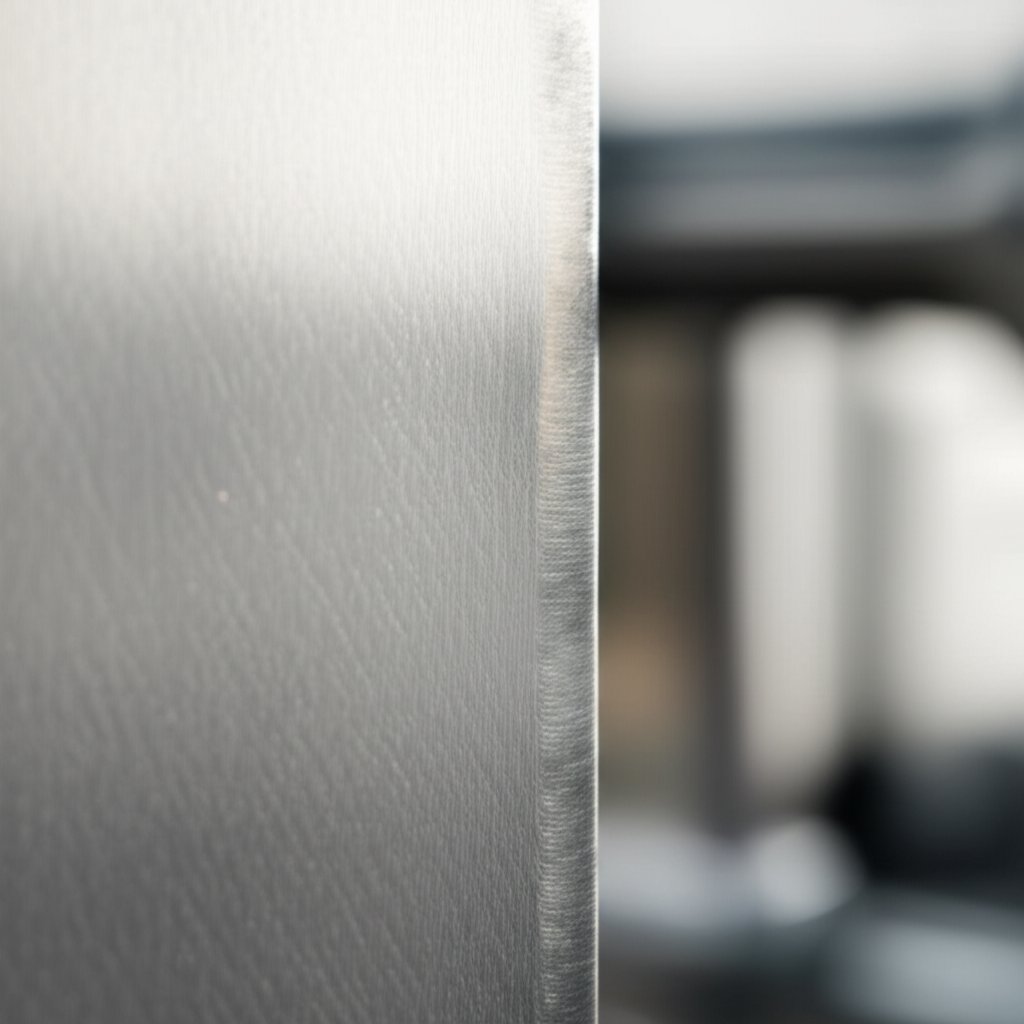
Have you ever wondered, can aluminum rust? If you’ve looked at a patio chair, soda can, or even the body of an airplane, you’ve likely noticed how common aluminum is in our daily lives. Its light weight and silvery finish make it a popular choice for everything from construction beams to kitchen foil. But with so many products exposed to the elements, it’s only natural to ask: does aluminum rust the same way iron or steel does?
This question isn’t just for the curious—it’s an important one for anyone who relies on aluminum for structural strength, aesthetics, or longevity. Imagine replacing a corroded window frame or dealing with failing gutters. The answer impacts homeowners, builders, engineers, and manufacturers alike. Aluminum’s reputation for resisting rust is one reason it’s so widely used, but there’s more to the story than meets the eye.
Here’s the key: while aluminum doesn’t rust in the traditional sense, it does experience its own unique form of corrosion. Unlike iron, which forms flaky, orange rust that weakens the metal, aluminum reacts differently when exposed to air and moisture. You might notice a dull gray or whitish coating on old aluminum surfaces, leading some to wonder if it’s rust. In reality, this is a sign of a distinct chemical process that actually helps protect the metal underneath (source).
In this article, we’ll unpack what really happens when aluminum meets the elements. We’ll clarify the difference between rust and other types of corrosion, explain how aluminum’s natural properties give it an edge, and explore the factors—like alloy composition and environment—that influence its durability. By the end, you’ll have a clear understanding of why aluminum stands apart, and how to make the most of its unique strengths in your projects.
Let’s clear up a common misconception: aluminum does not rust. But why is that the case? To understand, it helps to define what rust actually is. Rust refers specifically to the reddish-brown flaking that forms when iron or steel reacts with oxygen and moisture. The technical name for rust is iron oxide, and it’s a process unique to iron-based metals (source).
So, does that mean aluminum is immune to all forms of deterioration? Not quite. The answer to does aluminum corrode is yes—aluminum can and does corrode, but the process is fundamentally different from rusting. Instead of forming a flaky, destructive layer, aluminum reacts with oxygen to create a thin, hard coating called aluminum oxide. This layer actually protects the underlying metal from further damage, making aluminum highly resistant to ongoing corrosion (source).
In short, when comparing aluminum rust vs corrosion, it’s crucial to remember:
Understanding this distinction sets the stage for exploring how aluminum’s unique oxidation process works—and why it matters for long-term durability. Next, we’ll break down exactly what happens when aluminum meets air and moisture, and how this process differs from iron rusting.
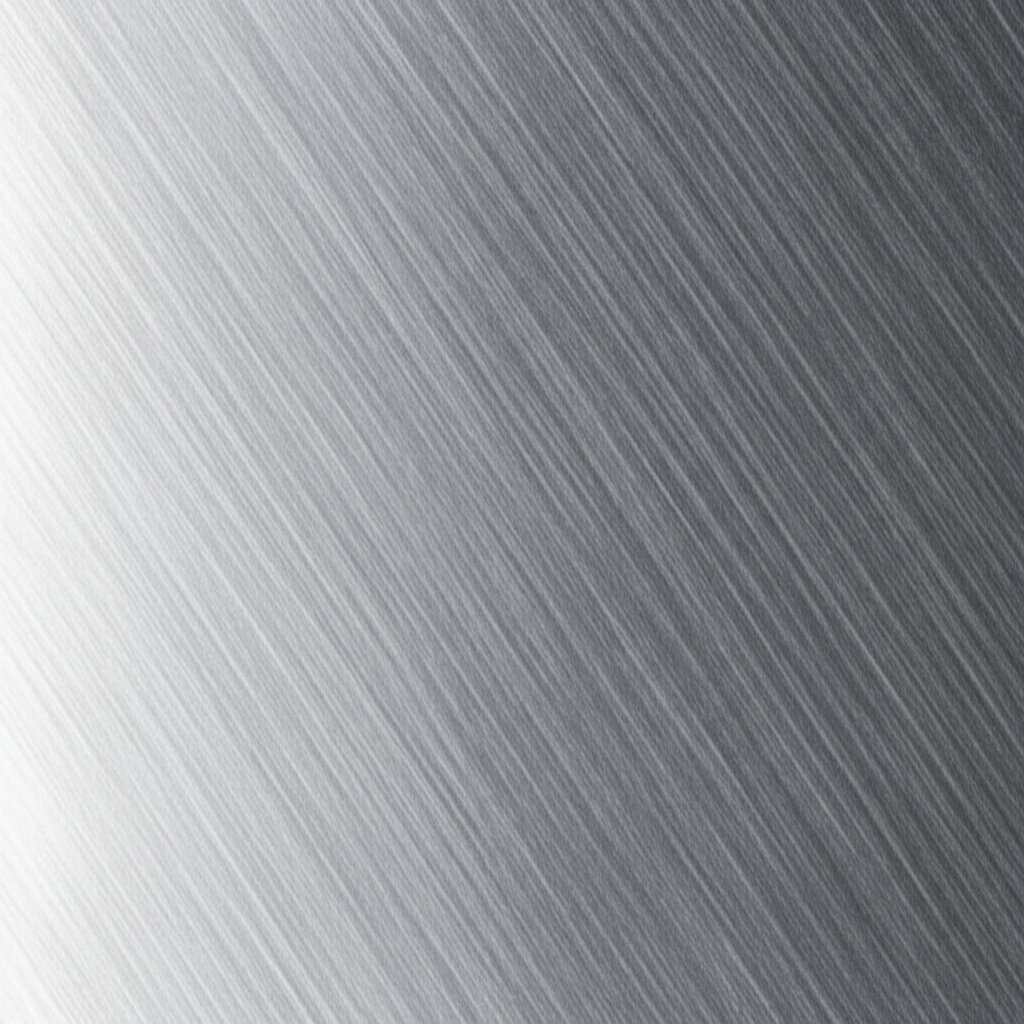
When you leave a piece of iron outdoors, you’ll eventually see a reddish, flaky layer appear—that’s rust. But if you leave an aluminum object outside, you might notice something different: a thin, whitish or grayish film that seems to seal the surface. So, what’s actually happening? Let’s break down the science behind aluminum oxidation and highlight the crucial difference between rust and corrosion for these two metals.
Sounds complex? Here’s the simple version: as soon as aluminum is exposed to air, it reacts with oxygen to form a microscopic layer of aluminum oxide (Al2O3). This process, called aluminum oxidation, is almost instantaneous. But unlike the rusting of iron, this oxide layer is:
This means that, rather than being a sign of decay, the dull film you see on aluminum is actually the metal’s way of defending itself. It’s like a built-in shield, constantly regenerating to keep the underlying material safe (source).
| Aspect | Aluminum | Iron/Steel |
|---|---|---|
| Metal Involved | Aluminum (Al) | Iron (Fe) or steel (iron alloy) |
| Oxide Formed | Aluminum oxide (Al2O3) | Iron oxide (Fe2O3), aka rust |
| Nature of Oxide Layer | Thin, hard, tightly adherent, self-healing, protective | Thick, porous, flaky, non-adherent, accelerates corrosion |
| Effect on Underlying Metal | Protects and preserves aluminum beneath | Exposes more metal, causing ongoing damage |
Imagine the difference: with iron, each flake of rust exposes fresh metal, which then rusts again—a cycle that can eventually destroy the object. With aluminum, the oxide layer acts as a tough, invisible armor. Even if the surface is scratched, the layer repairs itself, maintaining protection. This is why aluminum is so widely used in outdoor furniture, window frames, and even marine environments—it’s built for resilience (reference).
This unique oxidation process is the secret to aluminum’s long-term performance. It’s also why you’ll rarely see aluminum objects with the kind of severe, structural damage that plagues rusted iron. In fact, research has shown that the aluminum oxide layer is not only hard but also surprisingly flexible at the atomic level, allowing it to "self-heal" and adapt to minor deformations without cracking (reference).
To sum up: aluminum doesn’t rust, but it does oxidize—and this oxidation is a good thing. The next time you see a dull film on your aluminum tools or patio furniture, remember: that’s the metal’s natural shield at work, ensuring it stands the test of time. Up next, we’ll explore how different aluminum alloys handle corrosion, and why some are better suited for tough environments than others.
When you think of aluminum, you probably picture a metal that resists weathering and lasts for years. But did you know that most of the aluminum you encounter isn’t pure? In reality, aluminum is often alloyed with other elements to boost its strength, workability, or other properties. This process, while essential for many applications, can have a big impact on aluminum alloy corrosion resistance. So, how do these changes affect durability—and which alloys are best for tough environments?
Pure aluminum (the 1xxx series, like 1100 or 1350) boasts outstanding resistance to corrosion. That’s because its oxide layer forms quickly and uniformly, creating a strong barrier against moisture and chemicals (Clinton Aluminum). However, pure aluminum is also soft and not suitable for most structural uses. To make aluminum more useful, manufacturers add elements like copper, magnesium, manganese, silicon, or zinc. This creates a wide range of alloys—each with its own strengths and vulnerabilities.
Sounds complex? Here’s a simple way to look at it: the more elements you add, the more you change how aluminum behaves. Some additions, like magnesium and manganese, help maintain or even improve corrosion resistance. Others, like copper or zinc, can make the alloy stronger but also more prone to corrosion—especially in harsh or salty environments (Vietnam Cast Iron).
Imagine you’re choosing a material for a boat hull, a window frame, or a food container. The right alloy depends on how much strength, flexibility, and corrosion protection you need.
Let’s break down the key alloy families you’ll encounter and see how they stack up for corrosion resistance and everyday use:
| Alloy Series | Main Alloying Element(s) | General Corrosion Resistance | Typical Uses |
|---|---|---|---|
| 1xxx | 99%+ Aluminum (very pure) | Excellent | Electrical conductors, foil, chemical equipment |
| 3xxx | Manganese | Good | Beverage cans, cookware, heat exchangers |
| 5xxx | Magnesium | Very Good (including marine) | Marine structures, pressure vessels, transportation |
| 6xxx | Magnesium & Silicon | Moderate to Good | Window frames, architectural profiles, automotive parts |
| 2xxx | Copper | Fair to Poor (needs protection) | Aerospace, structural components |
| 7xxx | Zinc | Poor (high strength, low corrosion resistance) | Aerospace, high-strength applications |
Notice how the 5xxx series (magnesium alloys) are often considered the best aluminum alloy for corrosion—especially in saltwater or marine settings. The 1xxx and 3xxx series also perform well, making them popular for food packaging and cookware. On the other hand, 2xxx and 7xxx series, while incredibly strong, are more vulnerable to corrosion and often require coatings or cladding for protection (Clinton Aluminum).
Choosing the right alloy isn’t just about picking a number from a chart. Factors like the production process, heat treatment, and even trace impurities can affect how well an alloy stands up to corrosion (Shapes by Hydro). That’s why working with a manufacturer who understands these details is crucial—especially for demanding projects or harsh environments.
Specialized manufacturers like Shengxin Aluminum leverage advanced production capabilities to create profiles tailored for specific uses. Whether you need high-strength frames for transportation or corrosion-resistant profiles for marine construction, their expertise ensures the alloy and surface treatment are matched to your application’s needs.
Up next, we’ll explore how surface treatments like anodizing further enhance aluminum’s natural durability and help you get the most out of your chosen alloy.
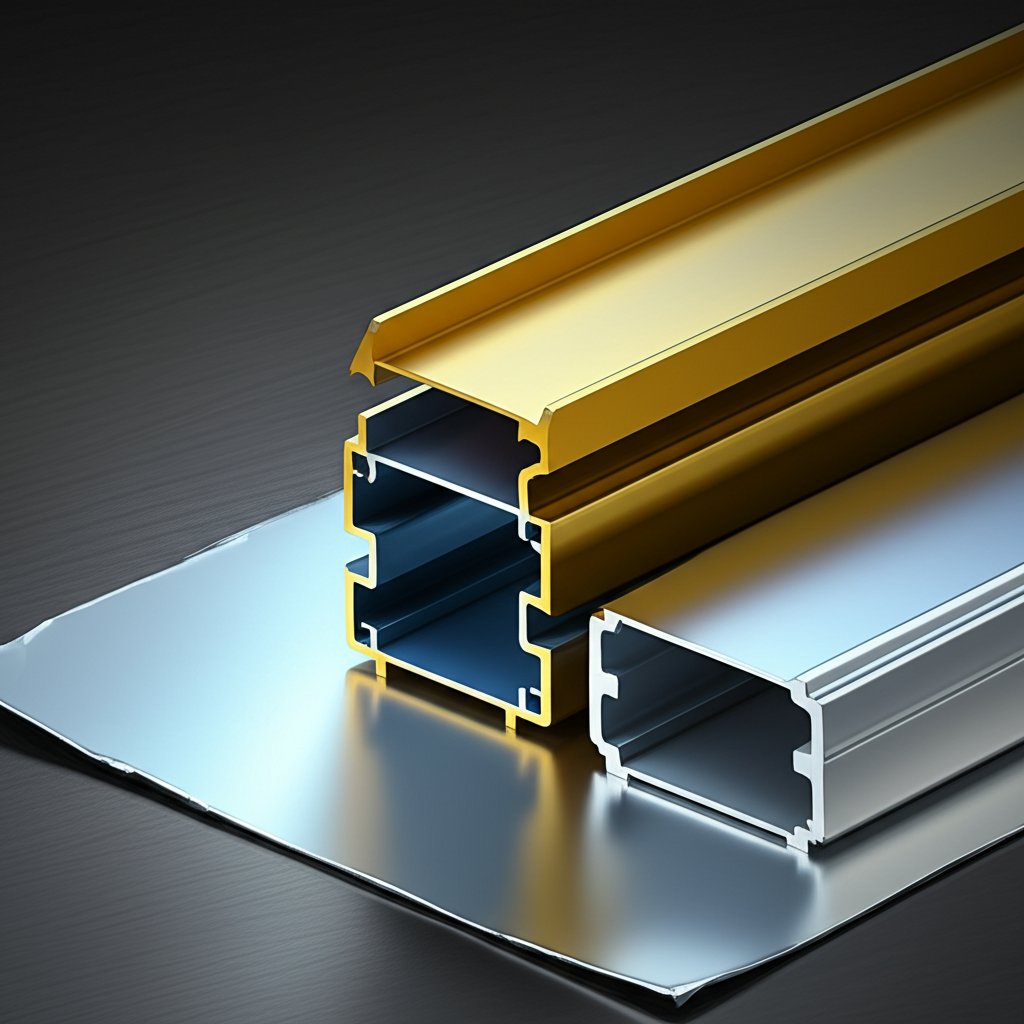
Ever wondered why some aluminum products shine for years without a hint of wear, while others dull or pit over time? The answer often comes down to surface treatment—specifically, the process known as anodizing. And if you’ve ever questioned, can anodized aluminum rust, or why aluminum foil seems so fragile, you’re in the right place.
Imagine you could reinforce aluminum’s natural shield, making it thicker, harder, and even more resistant to the elements. That’s exactly what anodizing does. Through a controlled electrochemical process, aluminum is submerged in an acid bath and subjected to an electrical current. This causes the surface to oxidize far beyond what naturally occurs in air, building up a dense, tough layer of aluminum oxide—much thicker than the layer formed by simple exposure to oxygen (Geomiq).
This anodized layer is not a coating that sits on top of the metal; it’s grown from the aluminum itself, making it exceptionally adherent and resistant to chipping or peeling. The result? An aluminum surface that’s not only more durable, but also more attractive and versatile for a range of applications—from architectural panels to smartphones.
Anodizing offers a suite of benefits that go far beyond basic corrosion protection. Here’s why this process is so valued across industries:
For industries ranging from aerospace to architecture, these qualities make anodized aluminum a top choice for both performance and appearance (Geomiq).
Here’s a question that comes up often: Can anodized aluminum rust? Technically, no—because rust is iron oxide, and aluminum contains no iron. However, the anodized layer is a form of controlled oxidation. Instead of causing harm, it protects the metal beneath. This means anodized aluminum is highly resistant to the types of corrosion that plague untreated metals. While it won’t develop rust, extreme chemical exposure (like strong acids or alkalis) can eventually break down the anodized layer, so it’s important to select the right thickness and quality for your application (Yeuell).
Now, let’s talk about aluminum foil—the ultra-thin, flexible sheet you find in kitchens and packaging. Given its thickness (as little as 0.0065 mm), you might wonder, can aluminum foil rust? Again, the answer is no, for the same reason: no iron, no rust. But the story doesn’t end there. The naturally occurring oxide layer still forms on foil, providing a basic level of corrosion resistance (AZoM). However, because foil is so thin, it’s more susceptible to mechanical damage—scratches, tears, or crumpling can break the oxide layer and expose fresh metal underneath. In neutral or mildly acidic/alkaline conditions, foil remains stable, but exposure to highly acidic or alkaline substances can lead to localized corrosion.
Whether you need robust architectural panels or delicate foil for packaging, the right surface treatment makes all the difference. Leading manufacturers like Shengxin Aluminum use advanced anodizing and surface treatment technologies to ensure superior protection and lasting performance—tailoring the process to match your specific needs and environment.
Up next, we’ll see how aluminum behaves when exposed to water and moisture, and why its oxide layer usually keeps it safe—unless conditions get extreme.
When you leave an aluminum object outside in the rain or even submerge it in water, you might wonder: can aluminum rust in water or does it stay as resilient as ever? The answer lies in how aluminum interacts with water and the environment around it.
Aluminum’s secret weapon against water is its natural oxide layer. As soon as aluminum comes into contact with oxygen—whether from air or dissolved in water—it forms a thin, tough coating of aluminum oxide. This invisible shield is highly adherent and acts as a barrier, preventing further reaction between the metal and its surroundings (Fractory).
But what if the water isn’t neutral? Here’s where things get interesting—and where aluminum corrosion in water can become an issue:
Imagine leaving an aluminum ladder in a pool or a boat hull in the ocean. In these cases, the biggest risk isn’t uniform corrosion—it’s pitting corrosion. This form of attack is triggered especially by chlorides (like those in saltwater or even some tap water). The oxide layer can be breached at tiny spots, leading to small, deep pits that can grow over time. While these pits might not always threaten the overall strength of the item, they can be unsightly and, in severe cases, weaken thin structures (Fractory).
So, while you won’t see aluminum "rust" underwater, understanding how water chemistry and environment affect its protective oxide layer is key to maximizing its lifespan. Next, let’s dive deeper into how saltwater environments present even greater challenges—and how to choose the right aluminum for the job.
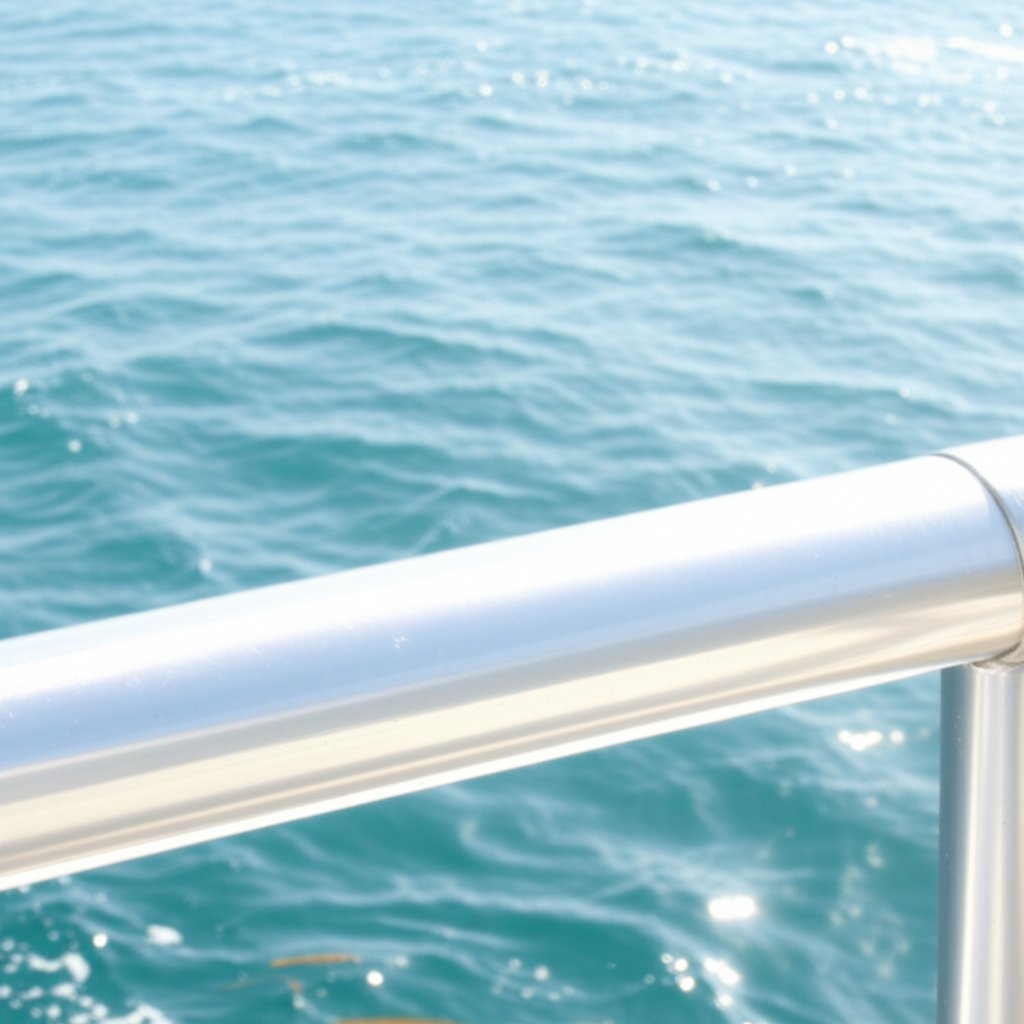
Imagine spending a day by the ocean—boats bobbing in the surf, aluminum railings glinting in the sun, and the tang of salt air everywhere. If you’ve ever wondered, can aluminum rust in salt water, or why marine environments seem so tough on metals, you’re not alone. Let’s break down what really happens when aluminum meets saltwater and how you can protect your investment.
Saltwater is much more corrosive than freshwater, and the culprit is the chloride ions dissolved in it. While aluminum naturally forms a thin, protective layer of aluminum oxide that shields it from corrosion, these aggressive chloride ions can attack and disrupt that layer. When this happens, the metal beneath becomes exposed, leading to a specific kind of damage called pitting corrosion—tiny, deep holes that can compromise structural integrity over time (Aluminum Handrail Direct).
So, while aluminum doesn’t rust (since rust is iron oxide), aluminum corrosion in saltwater is a real and serious concern—especially for boats, handrails, and outdoor fixtures near the coast.
Not all aluminum is created equal when it comes to resisting saltwater corrosion. Marine-grade alloys—especially those in the 5xxx series (like 5083, 5086, and 5454)—are specifically engineered to withstand harsh marine conditions. These alloys contain higher levels of magnesium, which helps preserve the integrity of the oxide layer even in the presence of chlorides (Continental Steel).
Choosing the right alloy is the first—and most important—step in ensuring your aluminum products endure the test of time and tide.
Worried about your aluminum corroding at the beach or on your boat? Here are practical steps you can take to minimize damage:
Key takeaway: While aluminum won’t rust like iron, saltwater can cause pitting and surface corrosion. The right alloy, surface treatments, and regular care are your best defenses.
Understanding how saltwater affects aluminum gives you the tools to make smart choices—whether you’re outfitting a boat, building by the sea, or maintaining outdoor fixtures. Up next, we’ll explore what happens when aluminum comes into contact with other metals and how to avoid galvanic corrosion in mixed-metal environments.
When you combine different metals in a project—say, using aluminum fasteners with a steel bracket or joining copper pipes to aluminum panels—you might not expect trouble. But have you ever noticed unexpected corrosion or damage where these metals meet, especially in damp or salty environments? This is often the result of galvanic corrosion, a process that can undermine even the toughest aluminum installations.
Galvanic corrosion, also known as bimetallic or dissimilar metal corrosion, is an electrochemical process that occurs when two different metals are in direct contact and exposed to an electrolyte—like water, saltwater, or even humid air (Industrial Metal Service). In this setup, one metal (the anode) will corrode faster, while the other (the cathode) is protected. The key factors that must be present are:
Sounds complex? Here’s a simple scenario: If you use aluminum rivets to fasten a copper plate, and rainwater gets into the joint, the aluminum (being less noble) will corrode much faster than if it were on its own. This is why galvanic corrosion aluminum is a big concern in construction, marine, and HVAC applications.
So, can aluminum and copper rust in a reaction? Not in the sense of forming iron oxide "rust," but when paired together in the presence of an electrolyte, aluminum will corrode—sometimes rapidly—while copper remains largely unaffected.
The galvanic series ranks metals by their tendency to corrode in a particular environment (usually seawater). The further apart two metals are on this list, the greater the risk of galvanic corrosion when they’re connected. Here’s a simplified table to help you visualize risky pairings with aluminum:
| Metal | Position Relative to Aluminum | Galvanic Corrosion Risk (with Aluminum) |
|---|---|---|
| Magnesium | Less noble (anodic) | Low (magnesium corrodes first) |
| Aluminum | Reference | — |
| Steel (carbon or stainless, active) | More noble (cathodic) | High (aluminum corrodes) |
| Copper | Much more noble (cathodic) | Very high (aluminum corrodes rapidly) |
| Graphite | Most noble | Extreme (aluminum is highly vulnerable) |
Pairing aluminum with metals that are much more noble (like copper or stainless steel) dramatically increases the risk of corrosion at the joint, especially if the aluminum surface area is small compared to the other metal (Industrial Metal Service).
Worried about your aluminum components corroding when paired with other metals? Here are practical steps you can take:
Key takeaway: Galvanic corrosion is a hidden risk when mixing metals, but with smart design—like insulation, coatings, and careful material selection—you can keep your aluminum installations strong and long-lasting.
Understanding how aluminum reacts with other metals helps you design safer, more durable products. Next, we’ll apply these lessons to everyday aluminum products—like cans, bikes, and gutters—to see how corrosion plays out in real-world scenarios.
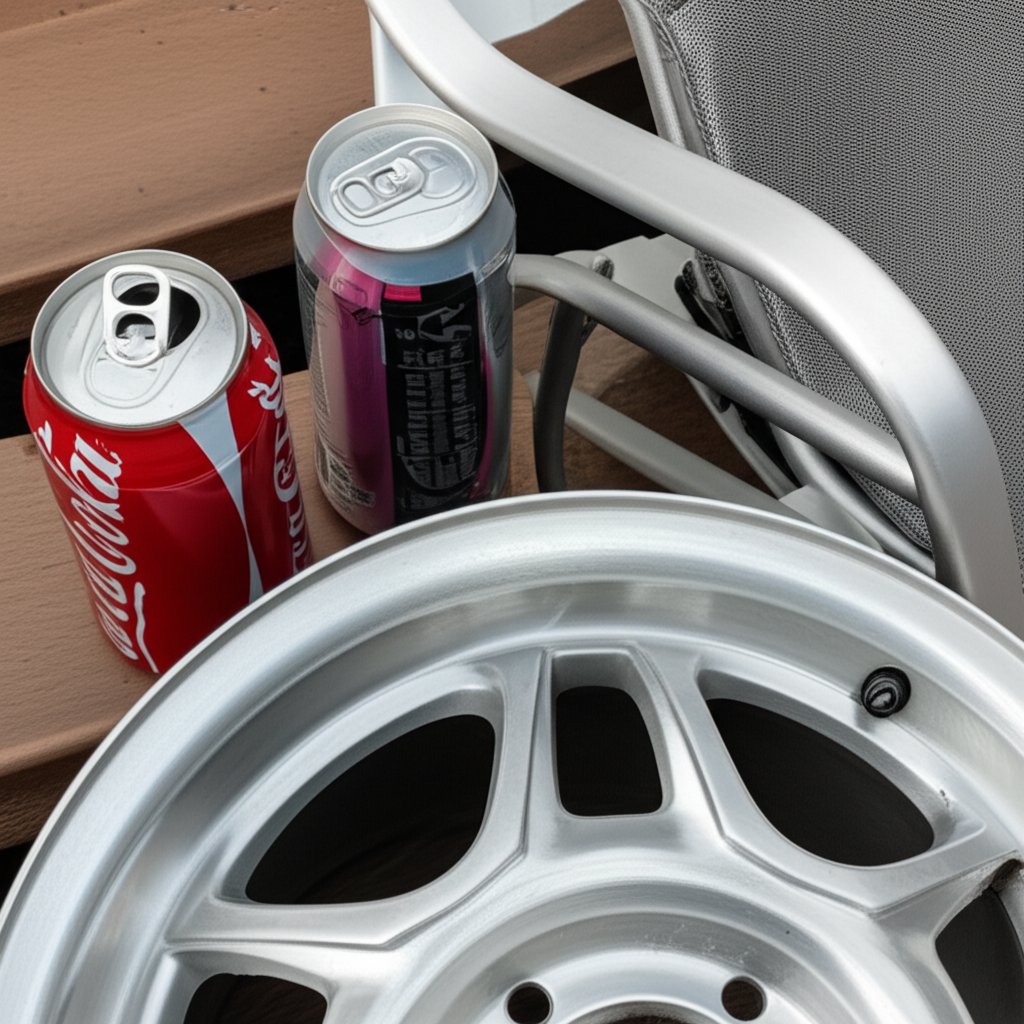
When you look around your home, garage, or neighborhood, you’ll spot aluminum everywhere—from soda cans and bicycles to car rims, patio furniture, gutters, and siding. But do these everyday items ever rust, or is something else happening when you spot discoloration or surface changes? Let’s break down what really occurs with aluminum in real-world products and environments, using practical examples and clear explanations.
Grab a soda can and you’ll notice it never turns orange and flaky, no matter how long it sits. That’s because aluminum cans don’t rust. Instead, they may develop a thin, whitish film over time—this is aluminum oxide, not rust. The can’s environment (usually dry, with only brief exposure to moisture) means oxidation is minimal and self-limiting. Even if a can is left outdoors, the oxide layer quickly forms and protects the metal beneath, so you won’t see the kind of structural decay that plagues steel cans (reference).
Aluminum is a go-to material for bikes, car bodies, and rims because it’s light, strong, and resists corrosion. But what happens when these products face rain, road salt, or mud?
Outdoor furniture, gutters, and siding are classic uses for aluminum because of its resilience to the elements. Here’s how they hold up:
So, whether you’re asking do aluminum cans rust, can aluminum bikes rust, or wondering about your gutters and siding, the answer is clear: aluminum doesn’t rust, but it can experience other forms of corrosion. Regular cleaning, prompt repair of scratches, and avoiding prolonged contact with salt or dissimilar metals will keep your aluminum products looking and performing their best.
Next, we’ll wrap up with practical tips for protecting aluminum and ensuring its legendary durability in all kinds of environments.
When you’re choosing materials for a project—whether it’s a backyard deck, a car part, or an architectural facade—you want to know it will last. So, let’s bring it all together: aluminum does not rust. Instead, it forms a unique, invisible armor—a thin, self-healing layer of aluminum oxide—that keeps the metal beneath safe from most environmental threats. This is the secret behind aluminum’s reputation for long life and reliability.
Sounds simple, right? But as you’ve seen throughout this guide, several factors influence how well aluminum stands up to the elements. Here’s a quick recap of what matters most:
| Action | How It Helps |
|---|---|
| Regular Cleaning | Removes salts, dirt, and contaminants that can breach the oxide layer and start corrosion. |
| Avoid Harsh Chemicals | Strong acids or alkalis can dissolve the protective oxide, leaving aluminum vulnerable (STEEL-IT). |
| Choose the Right Alloy | Match the alloy to the environment—marine-grade for saltwater, anodized for outdoor exposure. |
| Apply Protective Finishes | Anodizing, powder coating, or specialized paints add extra barriers against moisture and chemicals (Light Metals Coloring). |
| Insulate from Dissimilar Metals | Use non-conductive washers or coatings to prevent galvanic corrosion when joining with copper or steel. |
Imagine a material that not only lasts for decades but can be recycled again and again with no loss of quality. That’s aluminum. In fact, nearly 75% of all aluminum ever produced is still in use today, a testament to its circular value and sustainability (Novelis).
If you’re planning a project where corrosion resistance matters—whether it’s for architecture, transportation, or industry—partnering with a reputable manufacturer makes all the difference. Leading companies like Shengxin Aluminum combine advanced alloy selection, precision manufacturing, and state-of-the-art surface treatments to deliver profiles that stand up to your toughest demands. Their expertise ensures you get the right blend of strength, durability, and beauty for every application.
In summary: aluminum doesn’t rust, but it does offer outstanding aluminum corrosion protection when you understand its properties and treat it right. With smart choices and a little care, you’ll enjoy the benefits of this remarkable metal for years to come.
Aluminum does not rust because it contains no iron, but it can corrode over time under certain conditions. The formation of a protective aluminum oxide layer occurs almost instantly when aluminum is exposed to air, shielding it from further rapid corrosion. However, in extremely harsh environments—such as exposure to strong acids, alkalis, or saltwater—corrosion can develop more quickly, especially if the protective layer is damaged or compromised.
Aluminum will not rust when wet, as rust refers to iron oxide, which only forms on iron or steel. When aluminum gets wet, it reacts with oxygen to form a hard, protective oxide layer that prevents further corrosion in most environments. However, if aluminum is exposed to stagnant water, acidic or alkaline conditions, or saltwater, the protective layer may be compromised, potentially leading to pitting or other forms of corrosion.
Yes, aluminum can corrode in saltwater due to the presence of chloride ions, which break down its protective oxide layer and cause pitting corrosion. Using marine-grade aluminum alloys, such as those in the 5xxx series, and applying protective coatings can significantly enhance resistance to saltwater corrosion. Regular maintenance, including rinsing with fresh water, is also recommended for aluminum exposed to marine environments.
Rust specifically refers to iron oxide, which only forms on iron and steel. Aluminum does not rust because it contains no iron. Instead, aluminum undergoes corrosion by forming a thin, hard layer of aluminum oxide on its surface. This oxide layer is protective, self-healing, and prevents further corrosion, unlike rust, which is flaky and accelerates the breakdown of iron-based metals.
To protect aluminum from corrosion, choose the right alloy for your application, such as marine-grade aluminum for saltwater exposure. Apply surface treatments like anodizing or powder coating to enhance the oxide layer. Avoid prolonged exposure to harsh chemicals, stagnant water, or salt. When joining aluminum with other metals, use insulating materials to prevent galvanic corrosion. Partnering with manufacturers like Shengxin Aluminum ensures you get expertly produced, corrosion-resistant aluminum profiles tailored for demanding environments.
 Інтернет-сервіс
Інтернет-сервіс 0086 136 3563 2360
0086 136 3563 2360 sales@sxalu.com
sales@sxalu.com +86 136 3563 2360
+86 136 3563 2360